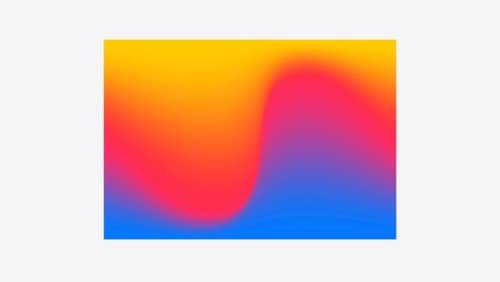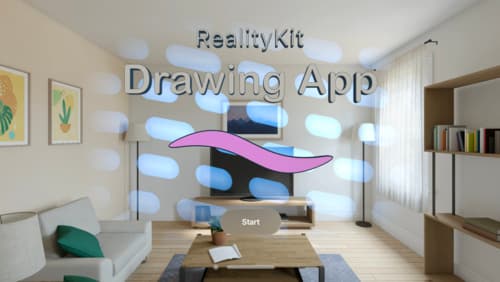SwiftUI shaders
Asked on 2024-07-31
1 search
SwiftUI shaders were introduced in iOS 17 and allow developers to create custom visual effects by leveraging the GPU for rendering. Shaders in SwiftUI are small programs written in the Metal shading language, which calculate various rendering effects directly on the device's GPU. This enables real-time performance for complex visual effects.
Here are some key points about SwiftUI shaders from the session "Create custom visual effects with SwiftUI":
-
Instantiation and Parameters: You instantiate a shader in SwiftUI by calling a function with its name on the shader library. You can pass additional parameters to your shader function, such as colors, numbers, or images. When applied to a view using the
layerEffectview modifier, SwiftUI will call your shader function for every pixel of your view (Create custom visual effects with SwiftUI). -
Shader Function: The shader function is executed on the GPU for each pixel of your view. The position argument refers to the pixel's location, and the layer argument represents the view's content. You can sample the layer to obtain its contents, but you must stay within the max sample offset that the shader was instantiated with relative to the position (Create custom visual effects with SwiftUI).
-
Types and Effects: SwiftUI shaders can be used for custom fills and three kinds of effects: color effects, distortion effects, and layer effects. Layer effects are the most powerful and effectively a superset of the other two (Create custom visual effects with SwiftUI).
-
Example - Ripple Effect: An example provided in the session demonstrates creating a ripple effect. The shader function calculates the distortion for each pixel based on the touch location and elapsed time, and then modifies the color accordingly. This effect is driven by a view modifier in SwiftUI that animates the elapsed time and touch location (Create custom visual effects with SwiftUI).
-
Experimentation and Debugging: Experimentation is key to finding the right values for shader parameters. The session suggests building debug tools to help visualize and tweak these parameters (Create custom visual effects with SwiftUI).
For more detailed information, you can refer to the session "Create custom visual effects with SwiftUI" from WWDC 2024.

Create custom visual effects with SwiftUI
Discover how to create stunning visual effects in SwiftUI. Learn to build unique scroll effects, rich color treatments, and custom transitions. We’ll also explore advanced graphic effects using Metal shaders and custom text rendering.

What’s new in SwiftUI
Learn how you can use SwiftUI to build great apps for any Apple platform. Explore a fresh new look and feel for tabs and documents on iPadOS. Improve your window management with new windowing APIs, and gain more control over immersive spaces and volumes in your visionOS apps. We’ll also take you through other exciting refinements that help you make expressive charts, customize and layout text, and so much more.

Build a spatial drawing app with RealityKit
Harness the power of RealityKit through the process of building a spatial drawing app. As you create an eye-catching spatial experience that integrates RealityKit with ARKit and SwiftUI, you’ll explore how resources work in RealityKit and how to use features like low-level mesh and texture APIs to achieve fast updates of the users’ brush strokes.
